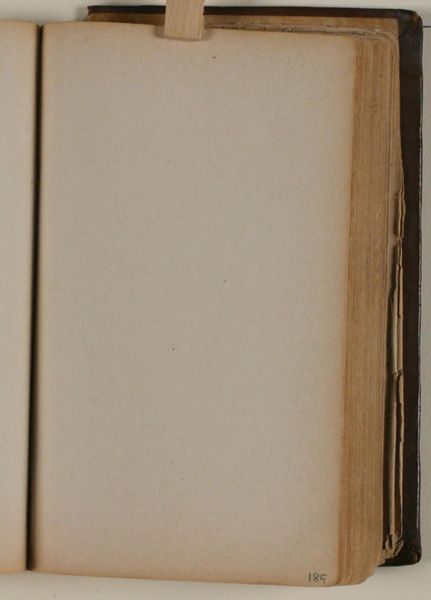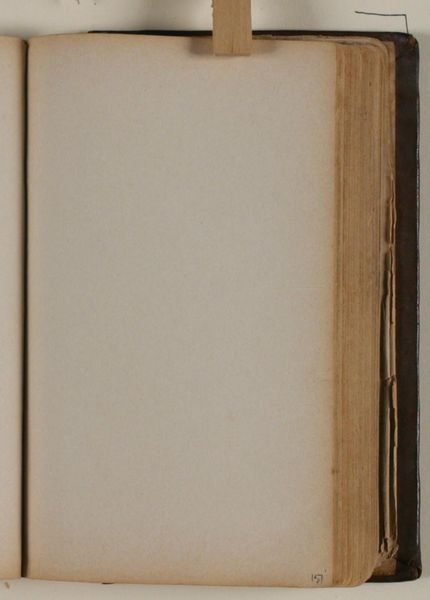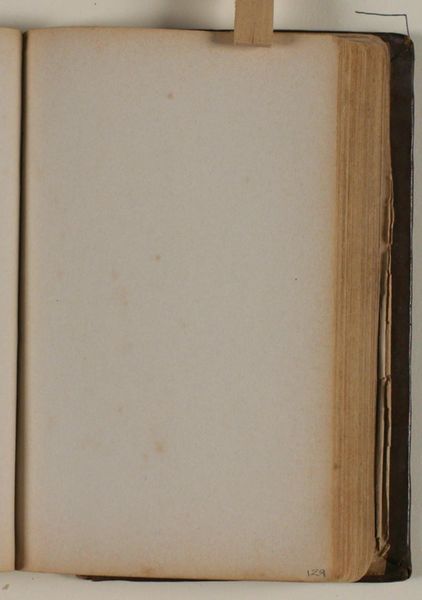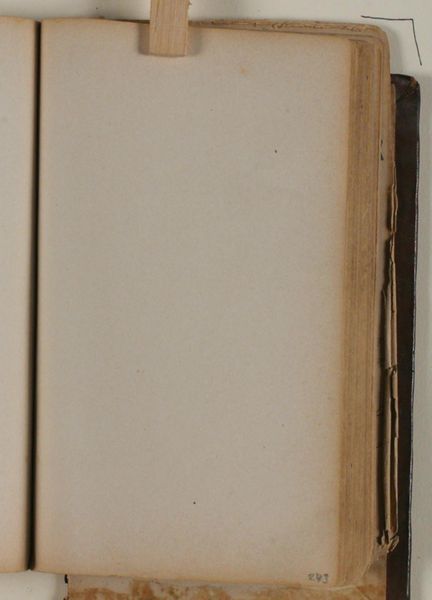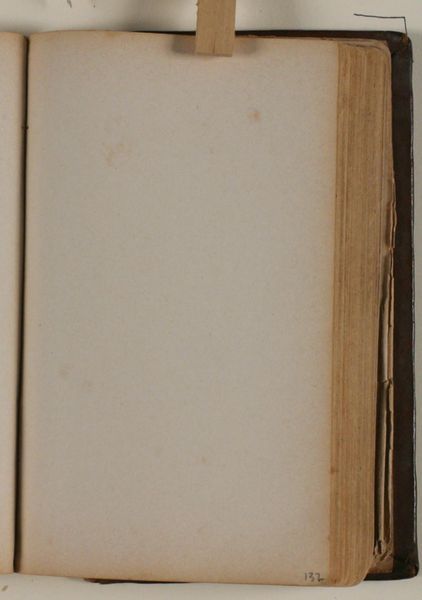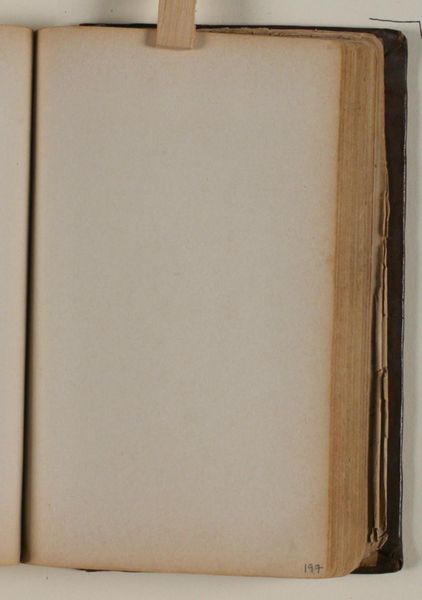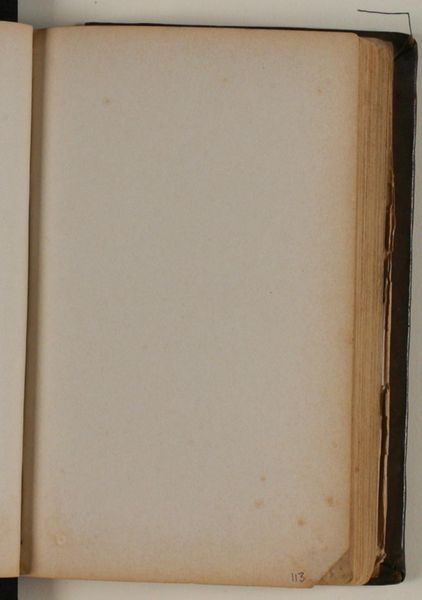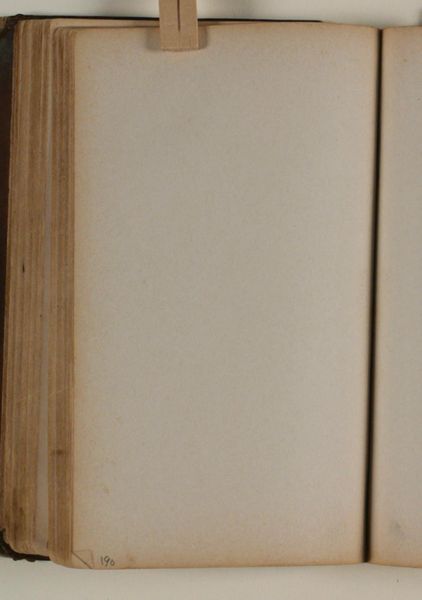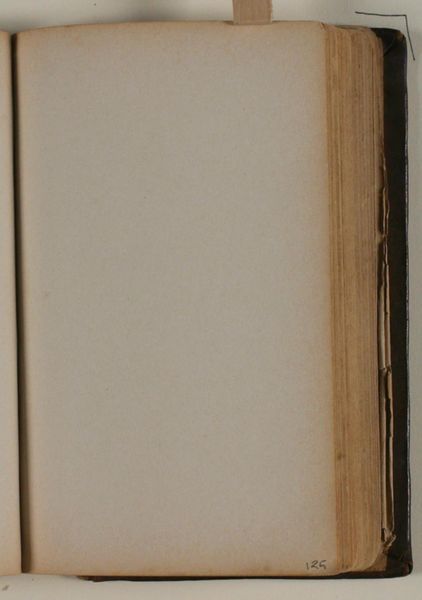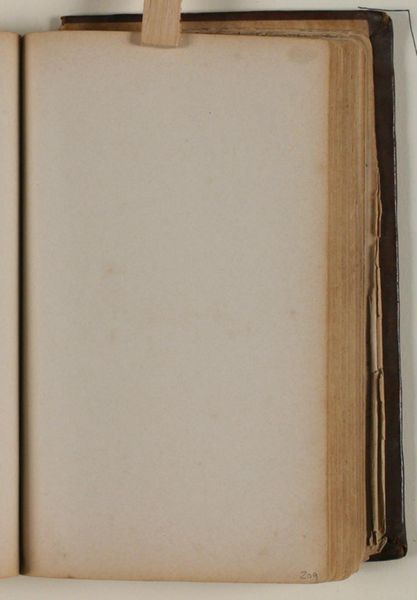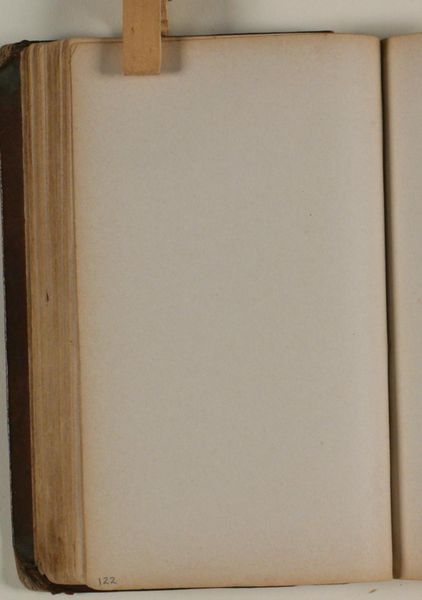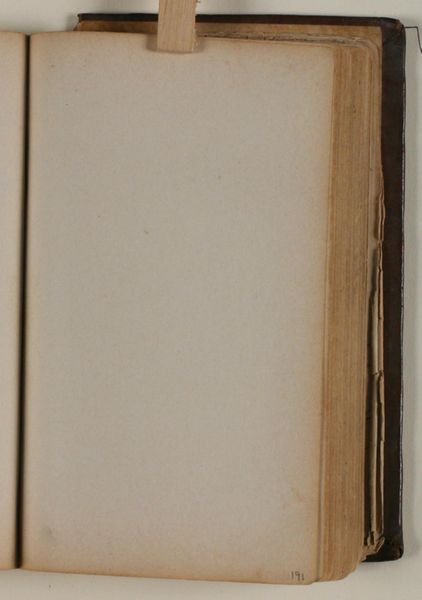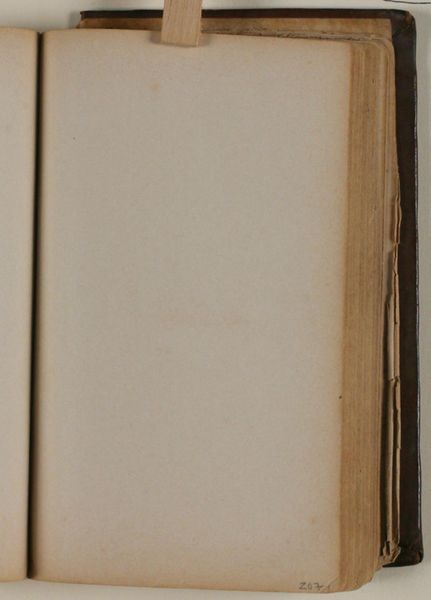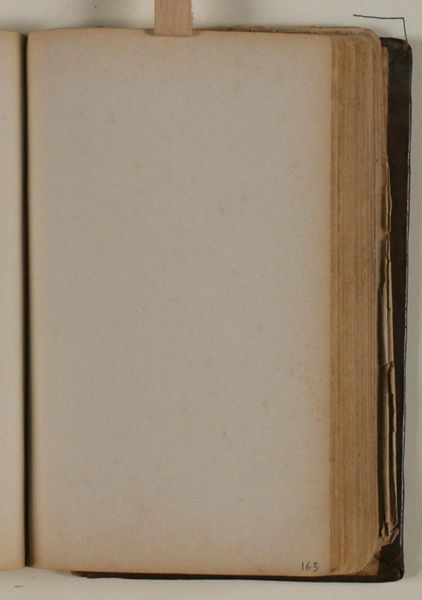
drawing, paper
#
drawing
#
paper
Curator: So, here we have "Blank," a drawing on paper by Niels Larsen Stevns, dating sometime between 1864 and 1941. Editor: It's, well, blank! The open book has such aged paper and a beautiful brown leather cover. I am curious about how we can interpret a drawing when there's nothing seemingly *drawn*. What do you make of this work? Curator: Precisely! Let's not overlook the means of production here. This "drawing" invites us to consider the raw materials, paper and binding and how they dictate, enable, and constrain artistic production. What does it mean when a drawing's material support *is* the drawing? Is this blankness in itself a statement? Editor: A statement against… what? Perhaps against the expectation that all paper must be filled, that value only exists in the mark making and the paper's inherent worth is zero until used? Curator: Good question! What labor went into making this paper? And what purpose was it intended for? Does the lack of mark making then emphasize labor? Further, consider this: what statement does that make when positioned within the hierarchy that separates fine art drawing from mundane or even industrial paper production? Editor: I see... by showing a blank page, Stevns forces us to acknowledge the physical work and resources behind art, breaking down that high/low art divide and revealing the capitalist processes that create it. I had not considered it this way initially. Thanks. Curator: Materiality always invites deeper inquiry and unveils hidden narratives. Keep questioning assumptions about production and consumption, and art opens into broader cultural questions.
Comments
No comments
Be the first to comment and join the conversation on the ultimate creative platform.
